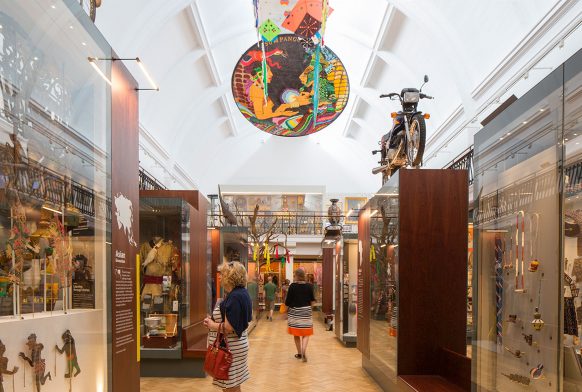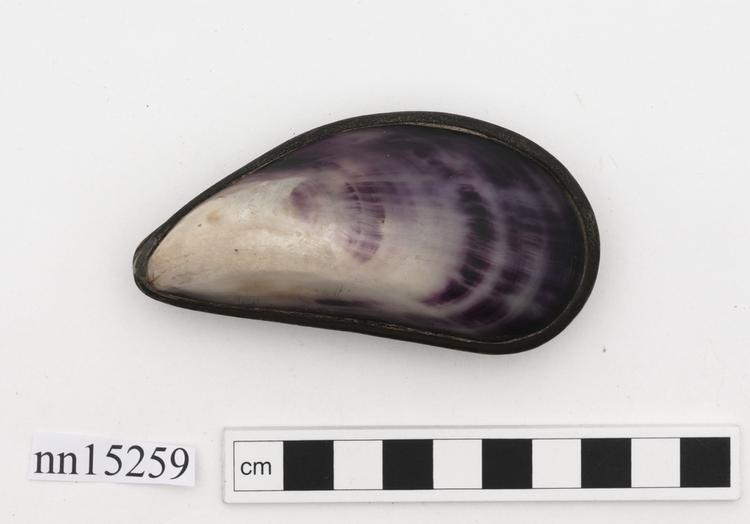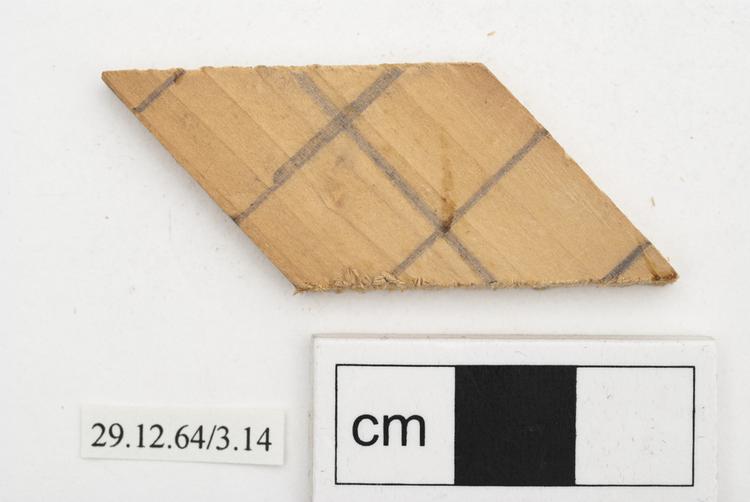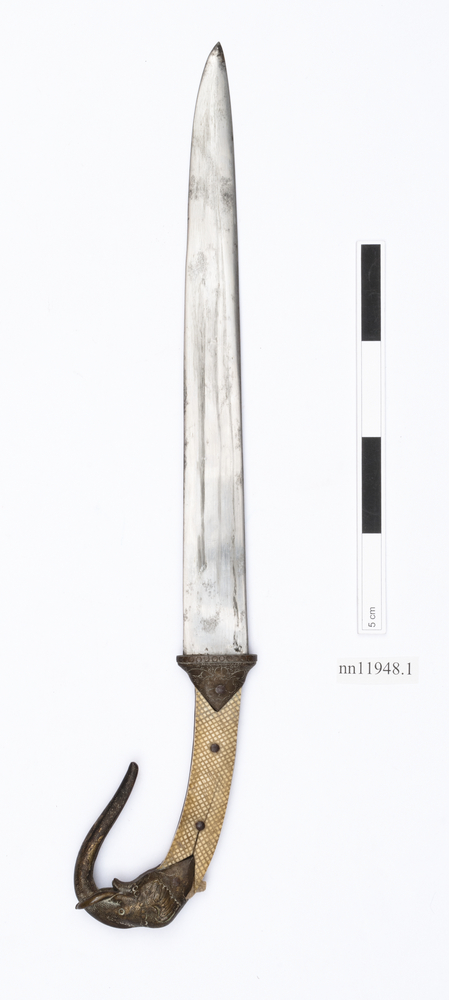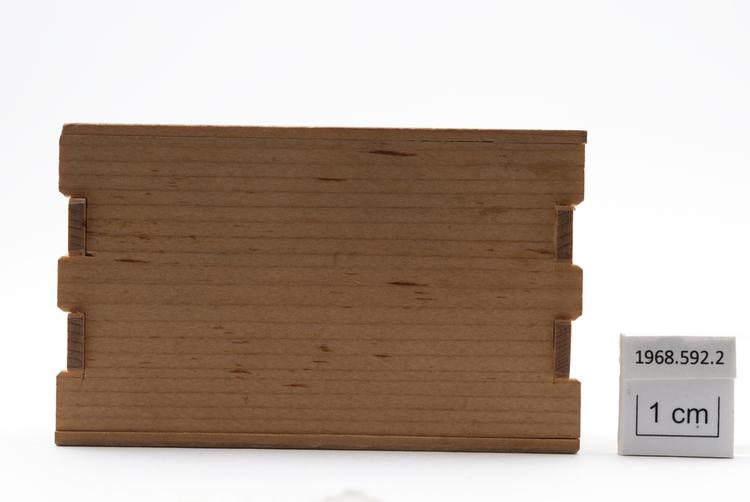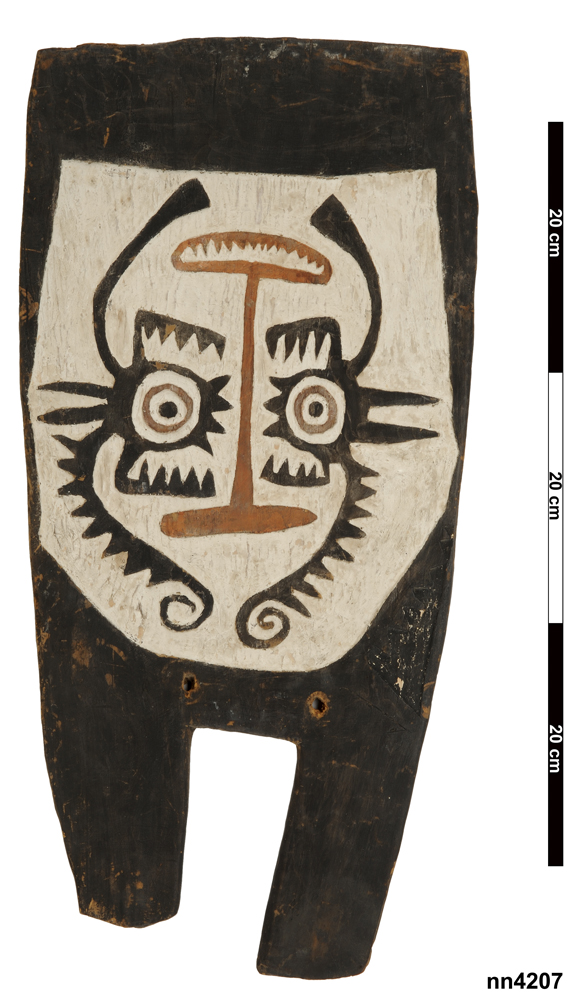
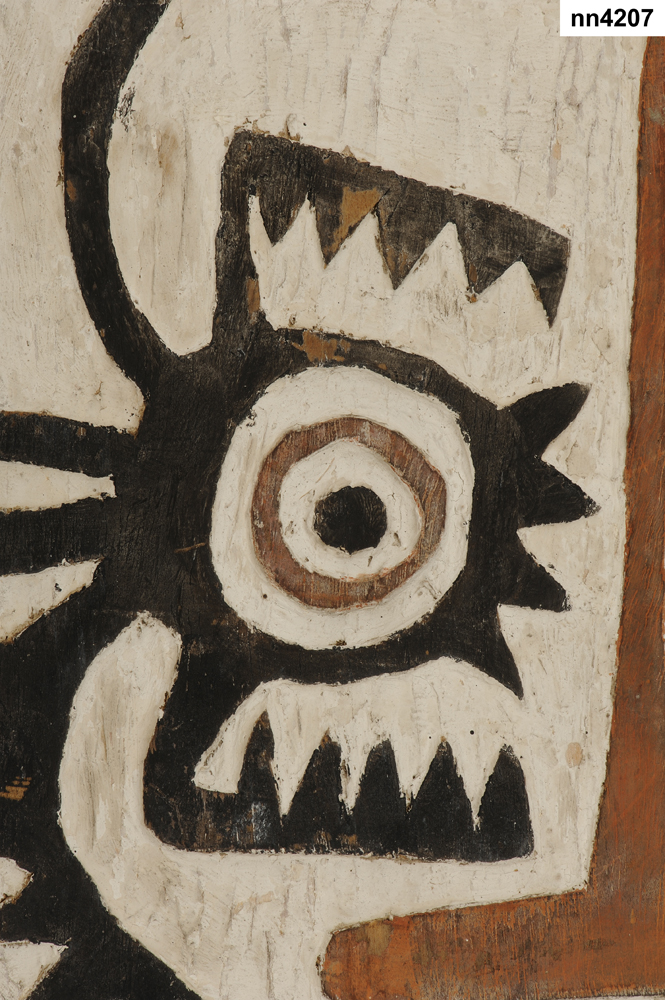
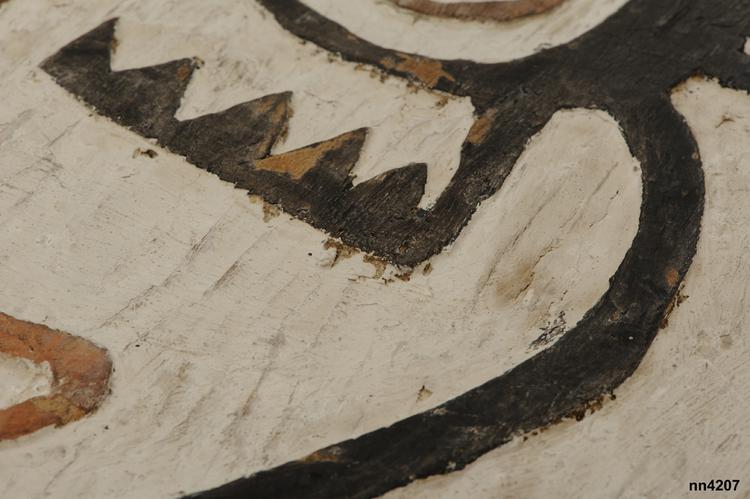
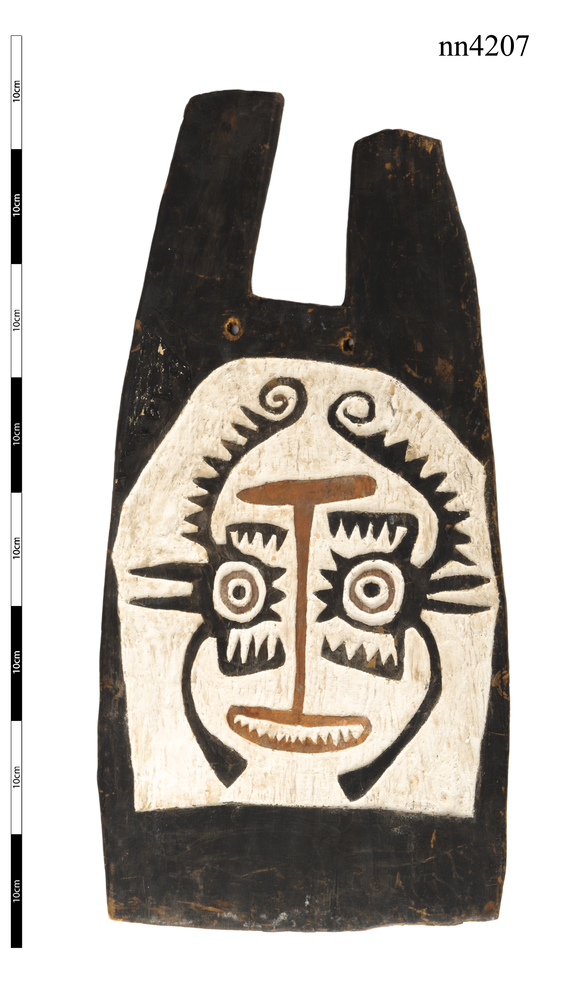
One piece wooden board from Papa New Guinea, with two rectangular horns at the top and relief engraving shallowly cut into the front. Board is painted black with a central white field in which the face is cut and painted in red and black. On the back is written in pencil ‘Shield, Vailala’ and there is evidence of the beginning of a second face which was later abandoned.
Archer’s Shoulder Shield, Elema People, Probably Orokolo, Gulf Province, Papua New Guinea This is a unique shield type produced by the Elema people of the Papuan Gulf. The Elema excel in producing artistic compositions in black and red on a white background, and this shoulder shield shows that off wonderfully. Shields such as this have their distinctive square-horned form due to their use: they were worn suspended under the left armpit with a loop of cord over the shoulder. The horns protected the front and back of the neck and upper chest, and the body of the shield covered the archer’s vital organs. Shields of this type allowed the Elema bowman to protect himself at the same time as using the most popular weapon of war among all the New Guinea mainland peoples. The designs incised on this shield are a mixture of different clan symbols that were traditionally used in a similar way to the shields of European knights during the Middle Ages, to identify a warrior’s nationality and loyalties. Wood, pigment. Late 19th Century.
fighting



